We like to have an overview of a year in our school. It is also nice to have, if you are to have a control visit from the State Supervisory Authority.
We started out by reading the Danish common goals for state schools really closely. We knew we had by law to cover the common goals, so it seemed logic to me to write down all the subjects they cover in state schools. Then we filled in all the literature we use for the different subjects and we also wrote an annual goal and ideology. I will make an example below (this is not our actual year plan, but put together in a simplified way to give inspiration to others. In our actual year plans, we also have a section under each subject specific to each child):
Year plan 2018-2019
4 children – 9th grade, 6th grade, 5th grade and 0 grade.
As a foundation our teaching will be based on Danish common goals. Our children should at any point be able to enter a state school, with the academical and social skills that should be required at that grade.
Our home school has a focus on individual interests and personal development. The school supports them in each their individual process of learning, what they are interested in.
Participation in home schooling networks supports their socialization and gives them a like-minded group to relate to.
The oldest child participates in classes in different subjects she chooses through the publicly offered youth school. She also continues with her writing group, that she has arranged herself, at a local library once a week. She also continues writing projects for different competitions online and writing together with other child authors online on Movellas website, where she also helps correct their texts for misspellings and gives input on the storyline. The second oldest child participates in “Eventyr Teatrets” drama school. She also continues her ballet training, where she performs publicly at different events. The second youngest child participates in ZooCamp at the Copenhagen Zoo, where she together with other children her age learns about the animals and how to take care of them. We annually complete a theatrical piece in our garden in cooperation with other home schoolers.
During the day the children also learn to participate in general common jobs around the house, such as cleaning, tidying, cooking, baking, planning, gardening, shopping and solving conflicts.
We arrange and take part in regular home school meetings. Some of these are held at the nature cabin at Streyf in Copenhagen. These meetings are open to new home schoolers and old home schoolers. It offers a chance to give to the community, but is also an opportunity to meet new like-minded people to build relationships and projects together with.
The subjects taught through the year, joint and individual level.
I have written examples below of our structure. In our actual year plan, we also have sections under each subject on each child.
Danish
Every week we go to the library together to read. The children take part in the librarys “Summer Book” review. They write letters to friends in the mail or by email. They all complete their current grade Danish book “My ….th Danish grammer/writing book” by Delta, Maj Rørup. They read every day books that they like. Our goal is to improve grammatical technique and knowledge. Build onto the children’s level of constructing a story line. Work towards better handwriting skills and spelling. We use different games, such as “Scrabble”, “Spelling dice”, “Story cubes”, “Alphabet memory game” and puzzles. Annual trip to “Herlufsholm Fantasy Book Fair” where we meet the authors. Write novels and participate in selective competitions. Do individual writing projects after personal interest.

A taste of our literature for the year in the subject Danish:
- DANSK, Gyldendals mini-grammatik, Erik J. Nielsen
- My ….th Danish grammer/writing book, by Delta, Maj Rørup
- The Magician Guild, Trudi Canavan
- The Girl at Midnight, Melissa Grey
- An unknown amount of Manga
- Donald Duck in many versions
- Skriveguide til forfatterspirer, Anna Lorenzen
- Fra ide til bestseller, Rikke Moos
- Alkymisten, Michael Scott
- Crossword puzzle
- Lademanns children lexicon
- The Smurfs
- Flunkerne
- H. C. Andersen
- Mio min Mio – in Swedish
- 1000 and 1 night adventure
- Aesops fables
- Barbapapa
- How to do brush lettering
- The Princess Academy
- Beetles
- Alkalær – Bo så en ko, Mi La + Ki Fu
- The abducted letter
- Training and learning an easy job 3-4 years
- Halfdan Rasmussen ABC
- Skæg med bogstaver
- Learn the alphabet with dots from a-å
- The family Hedenold
- Contrasts (series about shapes and colours)
- Newspapers and magazines
- George Orwell, Animal Farm
- George Orwell, 1984
- Brave New World, (1932) Aldous Huxley
- Uglies, Pretties, Specials, and Extras, Scott Westerfeld
- Mind Games, Teri Terry
Math
We work towards the ability to ask mathematical questions. To be able to set up mathematical problems and then analyse the basis for and abilities of the models. To follow and judge a chain of mathematical arguments. To understand different ways of representing mathematical objects. To decode symbols and equations. To asses and evaluate the use of mathematical aids. We cover Exponentiation, geometry, fractions, percentage, charts and interest. Every year the children will complete each their current grade math book “Sigma for ….. grade” and the additional test in the system. We learn about the history behind numbers, like for example roman numerals and zero. We take math into daily life, by calculating prize differences when shopping food and other daily necessities. We make a market stall by our house and learn about prizing and sales optimisation. We learn about algebra and how to use it in daily life. We try to improve each our level of mental arithmetic.
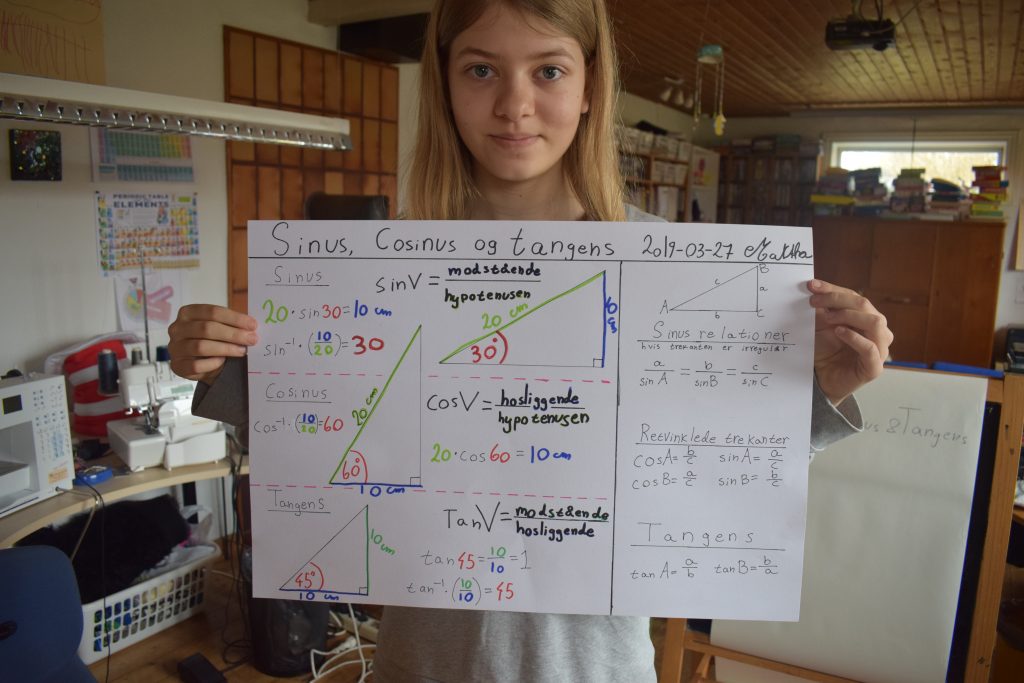
A taste of our literature for the year in the subject Math:
- Sigma for ….. grade, pupils book and work sheets
- Geometry 8-9
Traffic awareness
We travel together by car, public transport, by bike or by foot. We talk about the different traffic situations we encounter on our way and take action on the mistakes we make.
When the children reach a trustworthy level of individual responsibility for their own skills in the traffic, we let them slowly try different little trips in traffic on their own.
Then after a while when they feel more confident in traffic on their own, we let them for example go on their own to spare time activities or to a friends house on their own.
We also visit the traffic playground in Copenhagen, where you in a safe environment, can learn how to follow traffic lights and traffic signs by bike or by foot.
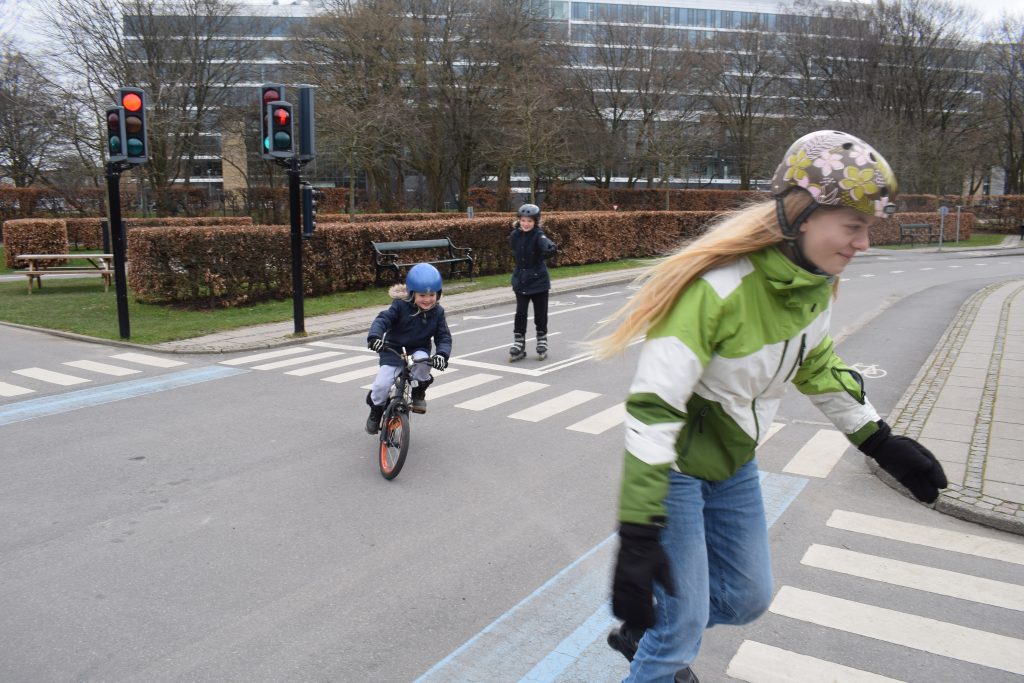
Physical Education
We bike together or alone around Copenhagen for exercise. We walk to the playgrounds in our area. We go shopping together and carry home loads of heavy food and necessities. We go to the sea, the forest and walk in the nature together. All our children like rollerblading, so they are often used for a quick run around in our area. We also have a trampoline in our garden, which is in use most of our days. We also have trees you can climb in our garden and in our local area, which is a popular sport with the kids. Generally, we try to challenge the childrens motorical boundaries.
We swim frequently in the ocean or in lakes during the summer. In the wintertime we visit different swimming pools, where we practice our swimming abilities.
In the winter we go to skating rinks inside and outside. If there is snow outside, we go skiing and ride on our toboggans.
We really love dancing. Most days we put on music and dance around the living room together. We all get to choose our favorite music and to us music is the joy of life.
We visit “Eventyr fabrikken” in Kokkedal, which is a very physical place for children, where they can play and challenge their own physical abilities. We also go to Sommerland Sjælland to exercise and have fun moving our bodies.
We meet with other home schoolers in a park once a year to play rounders together.
Every morning the kids have to run 5 times around our house. They also have to do 3 yoga exercises of their own choice.
Most of our kids go to spare time activities of their own choice. One does ballet and drama classes. Another attends lessons in break dance. Another does musical dance.
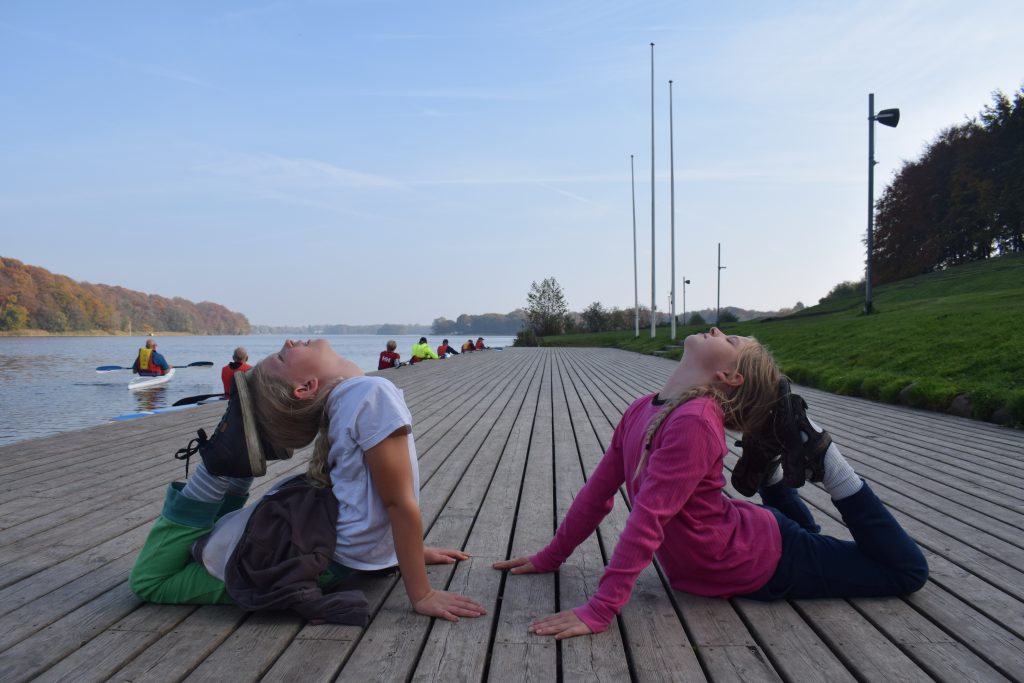
A taste of our literature for the year in the subject Physical Education:
- Sjov med yoga for børn og voksne, Juliet Pegrum.
- Yoga for dig, Rebecca Rissman.
- Lyt til løven yogaremser for børn, Lotte Salling og Emmamaria Vincentz.
Religion
Our Religious Education has Christianity as a foundation. We curiously and openly study, experience and look into the other major and minor religions.
We read aloud from children bibles, they take notes and draw a cartoon about that particular section. We then talk about the historical element at that time and discuss the story we have read in relation to present time.
We visit a playgroup for children in a church once a week. In that playgroup, we often experience theatrical setups of different important moments in the bible.
We read about other religions than christianity and talk about what religion in general means to us and other people.
We visit the Hare Krishna festival, The Turban day, the Jewish synagogue and the Ba Hai Centre .
We make a Lucia Parade to the joy of our grandfather. We read about the traditions we celebrate as a Christian Country.
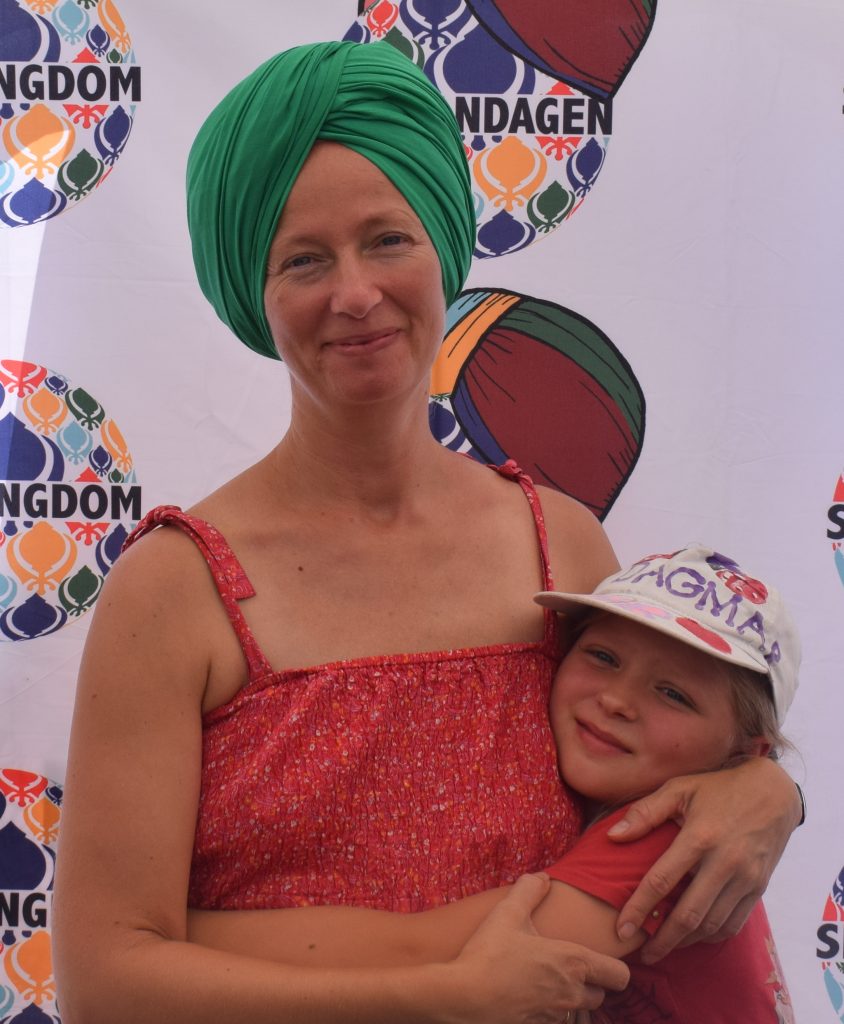
A taste of our literature for the year in the subject Religion:
- A selection of bibles. Mainly Børnenes illustrerede bibel, Borgen.
- Stories of Creation from different religions and cultures.
- Books about the Norse mythology.
- Annunciation to the shepherds (christmas).
Music
We look at a wide selection of Danish songs and hymns. We listen to them and practice singing them. We learn about nodes and practice reading them and writing them. We make music videos and write choreography to the dances we use in them. We dance to Just Dance videos from youtube.
Each child has chosen an instrument they want to learn how to use. They practice that instrument minimum twice a week. One plays the tin whistle, another guitar and two plays keyboard.
One of our children take part in singing lessons through her drama school. Another attends musical dance through evening youth school, where she will take part in a final show.
We study as many musicals, that time allows us. We go to see as many operas and ballets economically possible for us. We introduce the children to a wide range of classical music from different time periods. Every day we listen to music from different historical and genre points of view. We talk about that period in time and how this music may have come about, how it was received and read about the artists lives. We also visit the music museum and have a guided tour.

A taste of our literature for the year in the subject Music:
- A selection of Danish classical song books.
- The Clarke Tin Whistle song book.
- Vi spiller klaver 1.
- Hov hov, musik for sjov.
- Aura for Laura.
- Søde ord sangbogen, Alkalær.
- Læs nu løs sangbogen, Alkalær.
- youtube.
- Giro 413.
Art
In the subject Art, we do a lot of trips and workshops:
- We visit Rudolf Tegners museum and take part in a clay workshop there.
- We go to Louisiana museum and have a tour for children of the Wang Shu architecture exhibition.
- We visit the Louise Bourgeois exhibition at Louisiana and watch movies about her life and talk about how we understand her art, each of us.
- We go to Charlottenborg Art Hall and see the exhibition by Ai Wei Wei and John Kørner and more artists.
- We go to Rundetårn and see the New Scandinavian Exhibition.
- We visit Perspective Playground in Øksnehallen offered by Olympus.
- The oldest daughter visits the Crafts Fair in Rødovre with mum.
- The oldest daughter has an internship with a shop/artist who creates and sells mosaik.
- The second oldest daughter dresses up to take part in role play workshop in the forest.
- The second oldest daughter takes part in a theatre workshop through Gabriel Jensens ferierejser at Enghavevej AFUK Remisen.
- We organize a play/Circus/musical of the children’s choice in our garden, together with other home schoolers who are interested in making such a project.
Here is a selection of our art and crafts done at home:
- We experiment with Fimo clay.
- We create plays and perform with our puppet theatre.
- The children design and create their own Fastelavn costume, with help from mum.
- We host a Fastelavns party at our house where all Home Schoolers are invited and welcome to take part. We are usually around 45 people.
- The children write, direct and film their own ideas for movies.
- The children paint acrylic and water Colour on canvases.
- Mum teaches own children + interested home schooled children in art, colour and painting at our house.
- We talk about different artist we come across on our way in life.
- Mum teaches the children to Croche.
- Mum teaches the children Needle felting.
- Mum teaches the children embroidery.
- Mum teaches the children to sew by hand and by machine.
- Mum teaches the children to knit.
- We make house and caves out of card board boxes.
- We make dolls and animals out of straw.
- The oldest daughter designs, pattern cut and sew her own Harry Potter cape.
- The second oldest daughter sews a selection of bags.
- The second oldest daughter also develops her own skills in weaving beads by hand, into purses and other accessories.
- The second oldest daughter builds a Barbie bed, together with dad.
- The youngest daughter sews a pair of shorts for herself on the sewing machine.
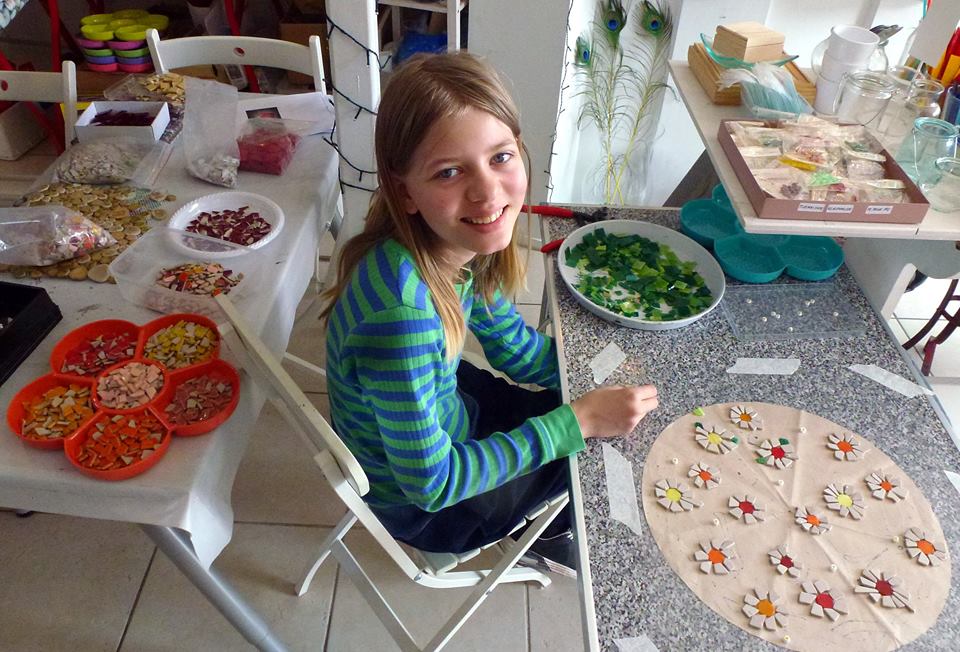
Natural Science (Physics, Chemistry, electronics, Biology, Geography)
In the subject Natural Science, we do a lot of trips and workshops. Here is a selection of them:
- Trip to Faxe Kalkbrud (Limestone quarry) and Faxe Geological museum.
- Visited the Radio Museum in Ringsted.
- Visited a blueberry plantation.
- Went to Møns Klint and looked at the geological biotope.
- The whole family went together to a Maker Space event, where everyone got the chance to try their hands on different kinds of electronic workshops.
- Annual membership of Eksperimentarium, where we will visit once a week.
- Went to lecture at Vartov on Spacetime.
- Went to lecture at the Geological Museum on Fossils.
- Visited the MS Museum of maritime in Elsinore.
- Visited the Technical Museum in Elsinore several times and at one time we met Vincent Ceremet there and he told us himself about his life and the machines he has invented.
- Annual visit to Roskilde cattle show.
- Went to Kvæsthusbroen and saw a huge rescue exercise with helicopters, divers, life guards and submarine.
- Visited Mosetræf in Utterslev Mose. A big nature celebration, with nature advisors and many activities for children, like fishing, examining edible plants in the area and shooting with bow and arrow.
- Went on a sailing trip on Furesø, with a locally arranged 1½ hour trip around the whole lake.
- Went camping in Hornbæk.
- Visited the Zoo several times.
- Trip to London mum and the oldest daughter, where they visited English friends, the Science Museum and China Town.
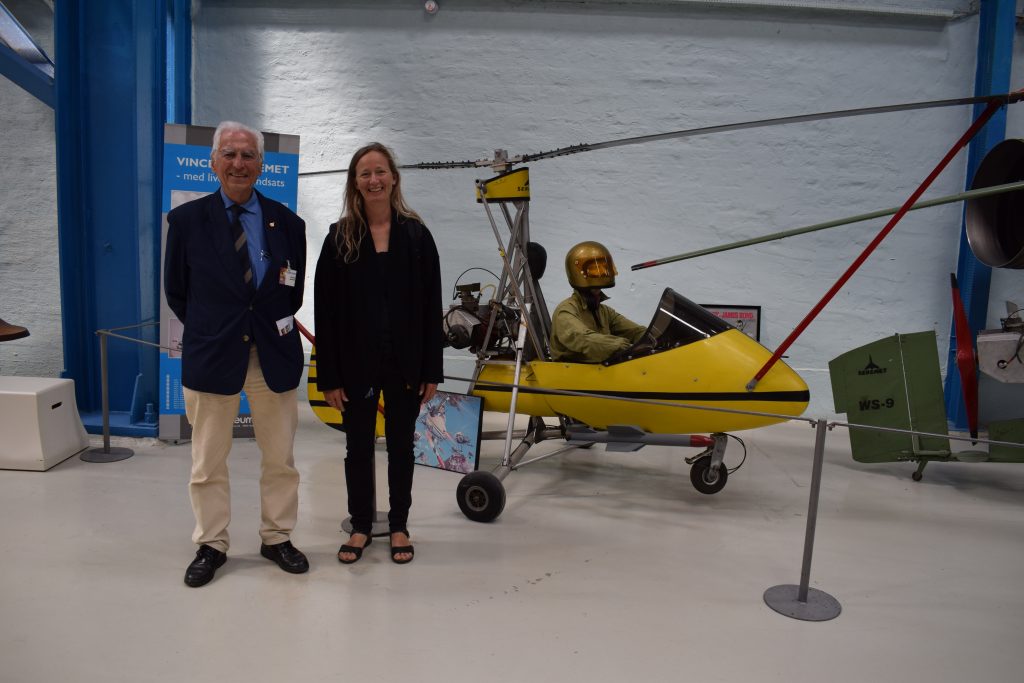
Here is a selection of our Natural Science done at home:
- The Children learn how to use OpenScad/Tinkercad with dad and then use it to design objects they want to print on a 3D printer.
- We have/buy a large selection of chemistry and physics set, which we carry out together.
- we do a large number of physics and chemistry experiments at home.
- We play memory games, backgammon, card games and much more to practice our logic thinking.
- We analyse basic things we do around the house like cooking an egg, making porridge, turning on the cooker (gas), lighting a bonfire and sort them into chemistry and physic reactions and processes.
- We have a bonfire in the garden where we cook our food, when we feel like it.
- The children write their own cookbook, where they write down the recipes they like the most or use the most.
- The children plant seeds and watch them grow in the garden. We are all responsible for our vegetable garden and take turns on removing weeds, watering and harvesting.
- We study the insects in our garden.
- We make a large number of electronic projects together as a family, with dad as the teacher. We make circuits.
- We study the periodic table. Talk and read about the chemical elements, atoms and molecules.
- We do the Ørsted and Faraday coil experiment on electromagnetism.
- We test magnetism with iron filings moving in patterns when exposed to magnetism.
- We teach the children to program in Scratch, HTML and Java.
- The three oldest children completed the Pirana series in Geography and biology.
- We own a children lexicon from the publisher Lademann, which the children sit on their own and read in when they feel like it. It tells about how our world works – electricity, water, heating and much much more.
- We bake and cook together and talk about the ingredients and the chemical processes.
- We read and talk about the different continents. Go through the different countries, culture, traditions, size, population, climate, industry and history.
A taste of our literature for the year in the subject Natural Science:
- Max Wainewright, Sådan koder du, Lær computerprogrammering trin for trin.
- Din bog om naturvidenskab, Politikens forlag.
- Børnenes dyrebog.
- Naturskolens vilde dyr.
- Dine fantastiske sanser.
- En meget kort historie om næsten alt, Bill Bryson.
Health, Sex Education and Family Knowledge
In the subject Health, Sex Education and Family Knowledge, we do a lot of trips and workshops. Here is a selection of them:
- Visit to the Healthy Lifestyle Fair at Øksnehallen, Copenhagen.
- First Aid course/workshop at Vigerslev bibliotek, Valby.
- The children have their teeth cleaned and checked at the main dentist school in Copenhagen, where we have the opportunity to ask questions and acquire professional knowledge of dental care.
- The children goes with their mother to the dentist and the dentist allows the children to sit next to her and learn about dental care.
Here is a selection of our teaching in Health, Sex Education and Family Knowledge at home:
- Talk about periods and pregnancy.
- Talk about birth control.
- We practice teeth brushing on a model of the teeth.
- We tell about dental care and tooth replacement for adult teeth.
A taste of our literature and other material for the year on the subject Health, Sex Education and Family Knowledge:
- Sådan får man et barn, Borgens Forlag, Per Holm Knudsen.
- A huge selection of books about how the body works.
- models of different parts of the body.
- body puzzles.
- model of the teeth.
- Din fantastiske krop, Steve Parker.
- Iwona Radunz, Thomas Röhner, Min rokketand – alt om dine mælketænder.
- Tandsylvanien, faktabog om dine tænder.
- Menneskekroppen, anatomi, fysiologi og sygdomme, Steve Parker
Educational, business and labor market orientation
We talk about which professions our friends and acquaintances have. When we come in contact with different professions, we talk about how a daily life would look like with this education/experience, and how to reach such an education and life.
Every year we take part in a christmas market, where the children have a stall where they sell home made crafts. They learn about math, production, advertising, salesmanship this way.
Our oldest daughter will take part in open day at different high schools she is interested in continuing her education at. She will also take part in “high school pupil for a day” where she is a part of an ordinary day at a high school.
When we go shopping or are in public spaces, we analyse advertising methods, what the employees do, how the spaces are adapted to their use and how well it works.
The two oldest children has a newspaper round that they manage themselves and sort out all the challenges this may involve. We work towards the children trying different paying jobs. Until now, they have tried delivering newspapers and advertisements. The oldest child has tried babysitting. The oldest child has also looked after chicken. The oldest child also cleans a near by airbnb with mum, once in a while.
All of our children has a few ideas to what direction of work they would like to do for a living. So we try to investigate those directions and make profession related trips.
History
In the subject History, we do a lot of trips and workshops. Here is a selection of them:
- Visit to Charlottenlund Fort and Charlottenlund castle.
- Regular visits to the National Museum in Copenhagen.
- Regular visits to the Workers Museum in Copenhagen.
- Participate in different School tours of Glyptoteket, with other home schoolers.
- Visit to Frilandsmuseet.
- Participate in different School Tours of Tivoli, with other home schoolers.
- Visit to Esrum Kloster.
- Visit to Fredensborg Lokalhistorisk Museum.
- Visit to the Historical War Festival at Vestvolden.
- Tour by cycle taxi from Kongens Nytorv to the little mermaid and past Amalienborg Castle.
- Visit to the Prison Museum (vestre fængsel).
- Visit to the Tram Museum (Sporvejs museet).
The History lessons we do at home, is taught with all the pupils together. We use a large selection of material on history, but are very fond of Nils Hartmann, and have gone through most of his books. The older children read a lot of history books on their own, but together we sit down and read aloud a chapter, then talk about the text, look up more information on the internet and look for geographical information on our map. The children take down notes on the information received.
A taste of our literature and other material for the year on the subject History:
- Børnenes Verdenshistorie, Nils Hartmann.
- Børnenes Danmarkshistorie, Nils Hartmann.
- Hvem bestemmer i Danmark, Nils Hartmann.
Languages
We teach English, German, Spanish, Chinese and Latin every week. We also gain knowledge and understanding of Swedish and Norwegian. The children are very fond of languages and like to get a general knowledge of different grammatical structures. English and German is our basis and the rest of the languages is taught on request from the children.
A taste of our literature and other material for the year on the subject Languages (we use the relevant school level books):
- For english we use Let’s do it, Forlaget Delta, Great inventions, The Lives of Einstein, Myths in 30 seconds, Hitchhikers guide to the galaxy, The adventures of Lulu, The sly fox, Sleeping Beauty, The little Mermaid, Adventures in famous Places.
- For German we use Gut Gemacht, Forlaget Delta, Pirana, Hansi Hase und der goldene topf and Goofy und das verwunschene Schloss.
- For Spanish we use Pirana and Duolingo.
- For Chinese we use Kinesisk sprog.dk, Chineasy, Chineasy flash cards and Chinese fridge magnets. We also test our Chinese on our local Chinese speaking shop owner near by.
- For Latin we use Cambridge Latin Book 1 on the internet, Fabula and Learning Latin Through Mythology.
- For Swedish and Norwegian we visited friends in Norway. We also read Mio min mio in Swedish.
Social Science
In general, the starting point in our home school is, that all questions must be answered. Especially questions about society and how it works, is important to get answered right away and get information and sources searched so that children can form their own opinion about what is happening around them. Source criticism and searching through many different sources are very important to us, in order for them to find their own individual understanding of society.
We try to involve the children in elderly people’s lives in Denmark by visiting nursing homes and grandparents to learn tolerance towards people who do no longer have the same abilities as themselves. Once a year the children take part in a fashion show in a nursing home, where mum teaches in sewing. The pupils go on the catwalk and show the work they have produced throughout the year.
We look at different political points of view. Try to understand the different medias view, seem from the political ideology they represent. We always try to research news stories from many sources and then discuss them together.
We look at politics in Denmark, the EU and the rest of the world. We look at living conditions in Denmark and compare it to the rest of the World. We look at working conditions in Denmark and the rest of the world. We look at feminism in Denmark and abroad.
We talk about wars in the world right now and read about them in the newspapers and other media. We also talk about the refuge challenges. We read about different structures of society, like royalty, dictatorship and democracy.
We discuss the justice system in Denmark and compare it to the rest of the world. We talk about poverty and wealth.
We talk about social norm, and how it shapes and affects a population.
We discuss environmental aspects and how we look after the Earth.
A taste of our literature and other material for the year on the subject Social Science:
- Newspapers
- Youtube
- Wikipedia
- Grundloven for børn
- Grundloven
- The internet
- movies
